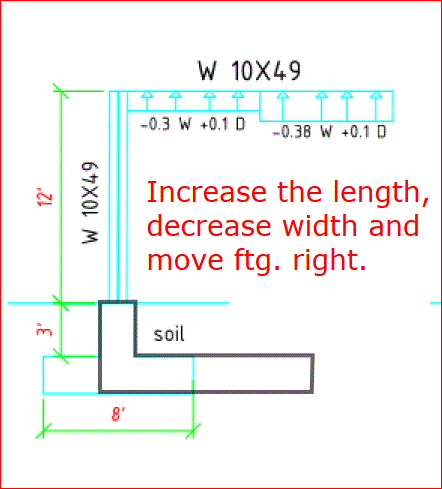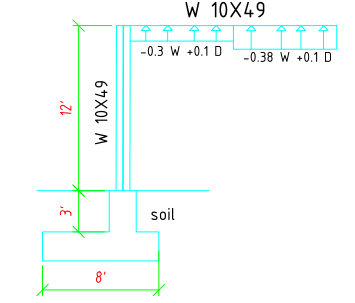Gus14
Civil/Environmental
- Mar 21, 2020
- 194
I designed a steel cantilever carport out of curiosity as shown on the attached plans. When designing for negative wind load pressures, the footing size is 8'x5.5'x18".
Do you have any tips or ideas to reduce the footing size ?
The plan view shows the pressures I found from the ASCE acting on the roof.
The attached elevation plan shows a summary of the calculation I made.
Note, the wind pressures were obtained at 10 degree angle roof inclination, I just did not show it on the elevation plan as the angle is relatively small.
Do you have any tips or ideas to reduce the footing size ?
The plan view shows the pressures I found from the ASCE acting on the roof.
The attached elevation plan shows a summary of the calculation I made.
Note, the wind pressures were obtained at 10 degree angle roof inclination, I just did not show it on the elevation plan as the angle is relatively small.

![[ponder] [ponder] [ponder]](/data/assets/smilies/ponder.gif)


![[pipe] [pipe] [pipe]](/data/assets/smilies/pipe.gif)
![[smile] [smile] [smile]](/data/assets/smilies/smile.gif)